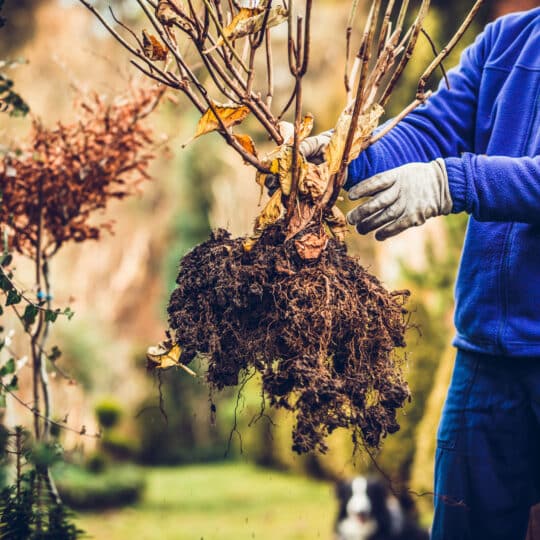Tips for Transplanting a Tree
Why & How it Should Move
Posted
April 4, 2024

When planting a tree, most gardeners have the best intentions of giving it a good life in the chosen spot. However, certain factors may arise that requires you to move the tree from one location to another. Learn how properly transplanting a tree can help give it a new lease on life.
Why You Should Move a Tree
Before you plant any tree, it’s important to properly plan where it will go. This process requires you to consider the soil type, amount of sunlight, and surrounding area. Once the tree is planted, several unforeseen obstacles may arise that requires you to move the tree. Some of these factors include:
- Construction. Whether it’s construction in your yard or a neighbors, the tree’s health may be affected by heavy machinery, soil compaction, or a change in the amount of sun, water, or air circulation. Transplanting helps to protect trees from damage before, during, and after construction.
- Health. If a tree is struggling due to poor soil, drainage issues, or overcrowding, transplanting it to a more ideal location can improve its chances of survival.
- Aesthetics. If your landscape is undergoing a complete renovation and there’s a more suitable spot for a specific tree you can try to move it to help preserve its beauty and balance in the yard.
Transplanting a tree is easier when it’s still young and relatively small. The process should be done carefully and with consideration for the tree’s health and well-being. It’s wise to consult with a professional arborist or tree care specialist to assess the tree’s condition and determine the best course of action before you move forward with any transplanting plans.
Process for Transplanting a Tree
While you’re consulting with an arborist about tree transplanting options, they’ll often ask the reason why you’re moving the tree, if you’ve considered other options, and if you have a new location in mind. Once they’ve determined whether or not the tree is a good candidate for transplanting, they can also help with deciding where the optimal planting site will be. You wouldn’t want to have to move the tree again. After choosing the perfect place for the replanted tree to thrive, follow these steps for transplanting.
- Prepare the new site. Just like you did while planting the first time, dig a hole in the new location that is twice as wide as the tree’s root ball and slightly shallower than its depth. Make sure the new site is ready before you dig up the tree so there’s less of a shock to the roots.
- Prepare the tree. Prune any dead or diseased branches, this takes some of the pressure off the tree. Once the new site is ready. carefully dig around the tree’s root ball, taking care not to damage the roots, but trim any damaged or circling roots.
- Transplant. Lift the tree carefully, keeping as much soil around the roots as possible. Place the tree in the new hole, ensuring that it’s upright and at the same depth as it was in the original location. Backfill the hole with soil, and water the tree thoroughly.
- Aftercare. Mulch around the base of the tree to retain moisture and suppress weeds. Water the tree regularly, especially during the first year after transplanting. Monitor the tree for signs of stress, and provide additional care as needed.
Transplanting can be stressful for the tree, but with the proper care before, during, and after the process, the tree has a better chance of establishing itself in its new location. If you’re considering transplanting a tree in your yard, contact Elite Tree Care to help with the initial consultation and new site location advice. With expert assistance. your tree is more equipped to thrive in its new home.

Download Your FREE Tree Removal Guide
Even dedicated DIYers should think twice before taking on the task of tree removal. Our guide will help you decide whether to hire a tree service and how to get the most value for your money.